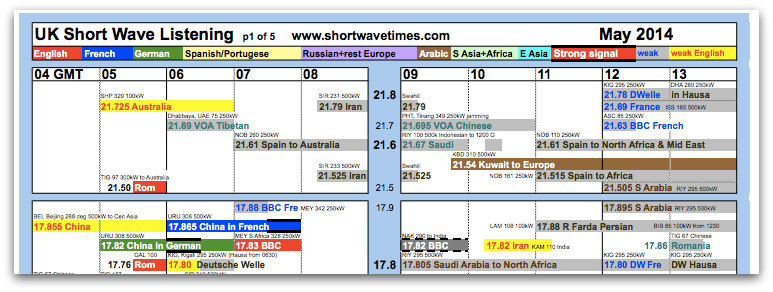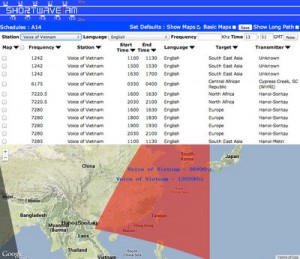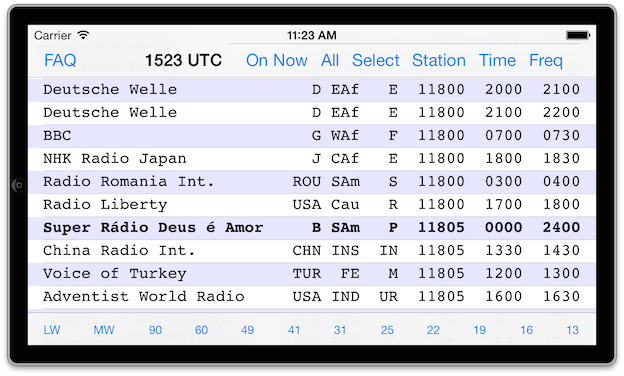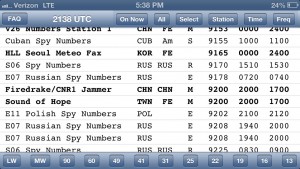 I received my copy of the 2014 World Radio and TV Handbook (WRTH) directly from the publisher a few days ago, just prior to a 24 hour power outage.
I received my copy of the 2014 World Radio and TV Handbook (WRTH) directly from the publisher a few days ago, just prior to a 24 hour power outage.
As many SWLing Post readers know, I always look forward to receiving this staple radio reference guide each year. While other reference guides have dropped out of the scene, WRTH has remained strong, somehow resistant to the economy’s negative influence upon radio–and the publication’s quality has been wonderfully consistent. It’s no wonder that WRTH has a loyal readership–not only among hobbyists, but also among commercial broadcasters, thus giving it a much broader reader base.
WRTH’s team of noted DXers from around the world curate frequencies and broadcaster information by region; while I’m not sure how they orchestrate all of this, the end result is truly a symphony of radio information. In addition to broadcaster listings, WRTH’s radio reviews, feature articles, and annual HF report make for excellent reading.
But the WRTH isn’t just a frequency guide: the publication always devotes the first fifty or so pages to articles relating to the hobby. Following, I offer a quick overview of these.
The first article always features a WRTH contributor (indeed, it’s this very network of contributors that make WRTH and its listings such a success): this year, writer Max van Arnhem tells us how he got interested in the hobby and what being a contributor means to him.
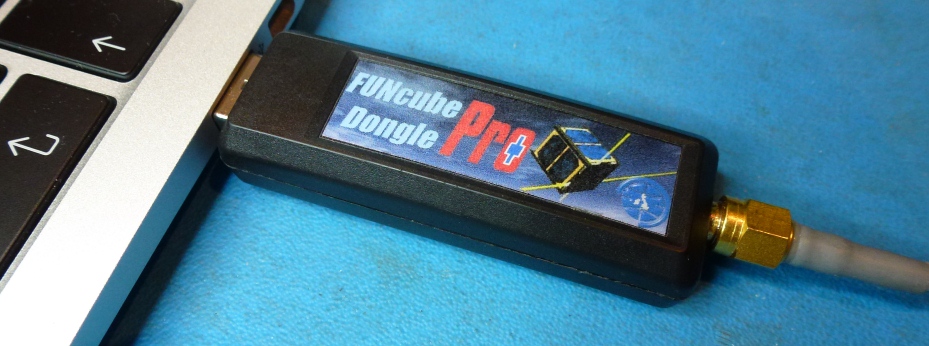 The second set of articles is always my favorite: WRTH receiver reviews. And the review in this issue is no exception. This year, WRTH reviewed the CommRadio CR-1 (which won their Best New Receiver award, and, I was pleased to see, received many of the same good marks I gave it). They also review the FunCube Dongle Pro+ (above), the new AOR AR6000, the WinRadio Excalibur Ultra (spoiler: the reviewers say it’s the best they’ve ever tested!), the AOR AR8200D handheld receiver, and the YouKits FG-01 Mk II Antenna Analyzer. As I’ve come to expect from this publication, these are all great comprehensive reviews.
The second set of articles is always my favorite: WRTH receiver reviews. And the review in this issue is no exception. This year, WRTH reviewed the CommRadio CR-1 (which won their Best New Receiver award, and, I was pleased to see, received many of the same good marks I gave it). They also review the FunCube Dongle Pro+ (above), the new AOR AR6000, the WinRadio Excalibur Ultra (spoiler: the reviewers say it’s the best they’ve ever tested!), the AOR AR8200D handheld receiver, and the YouKits FG-01 Mk II Antenna Analyzer. As I’ve come to expect from this publication, these are all great comprehensive reviews.
The following article is “The History of Shortwave Broadcasting in a Nutshell,” written by noted radio historian and author, Jerry Berg. In just a few pages, Berg takes you through the remarkable history of shortwave radio broadcasting.
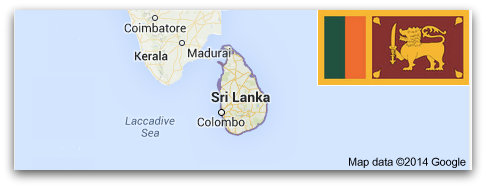
Following this, noted DXer and WRTH contributor, Victor Goonetilleke, offers a fascinating article focusing on broadcasting on his home island country of Sri Lanka. It’s a enlightening overview of some of the changes that have occurred within the Sri Lankan broadcasting scene (DXers and SWLers will likely recognize many of the stations Goonetilleke mentions).
 WRTH always highlights a radio broadcaster as well, and this year, it’s the Voice of Vietnam. Despite my many years of hearing VoV on the air, I did not realize how deeply involved they were during the Vietnam War (which took place when I was a kid). The station today prides itself on responding to QSL requests and listener comments.
WRTH always highlights a radio broadcaster as well, and this year, it’s the Voice of Vietnam. Despite my many years of hearing VoV on the air, I did not realize how deeply involved they were during the Vietnam War (which took place when I was a kid). The station today prides itself on responding to QSL requests and listener comments.
The final sections of articles are dedicated to the WRTH digital update–this year’s subject is “Digital Future“–and their HF propagation report/forecast.
In summary, this is another great edition of the World Radio TV Handbook. As I’ve said many times, though I use online frequency databases fairly regularly, there is just no replacement for a good printed frequency guide. For DXers who collect QSL cards, you’ll find that broadcaster contact information in WRTH is often more up-to-date than a broadcaster’s own website.
Not only does WRTH contain more in-depth information on broadcasters and schedules, but it makes for quick reference, and doesn’t require a computer or Internet connection–much like, well, your shortwave radio.
Purchase your copy of WRTH 2014 directly from WRTH’s publishers, or from a distributor like Universal Radio (US) or Radio HF (Canada). Happy reading–and listening–in 2014!



